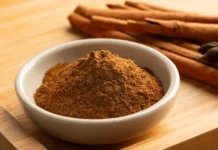Mobile phones are devices that you frequently come into contact with on a daily basis, so they tend to easily accumulate germs, viruses, bacteria, and dirt. When a phone is dirty and infected, it can cause illness in humans. Therefore, you should regularly clean and disinfect your mobile phone to prevent diseases and protect your health. To disinfect your phone, you need to follow these methods:
1. Simple disinfection
Turn off the mobile phone and disconnect it from the charger. Make sure to turn off your phone so that it doesn’t get damaged during the cleaning process. Don’t forget to remove the charger, as if it gets wet, it can cause dangerous short circuits.

Disconnect the phone
Most bacteria accumulate on the phone’s casing, so remember to remove the casing before starting the cleaning process. If the phone case has many parts, separate each part and clean them individually.

When cleaning, place your phone and the phone case apart from each other so that they don’t get contaminated again. Pay attention to the phone’s ports, as they can easily get damaged if they are not protected by the case.
Pour a few drops of dishwashing liquid into a bowl of water
Pour warm water into a small bowl and add 1-2 drops of dishwashing liquid, stir until completely dissolved. It is better to use an antibacterial solution, as it can kill more bacteria.

Dip a small piece of cloth into the solution and wring out the excess water
Completely immerse the cloth in the solution, then wring out the excess water. Do not use paper towels, toilet paper, or sandpaper as they can damage the screen of your mobile phone.

Gently wipe the cloth across the screen to remove bacteria. Start from the phone screen and clean the entire phone with circular motions. Clean around the microphone and buttons carefully, as water can get trapped inside and damage your phone.
After cleaning the screen, flip the phone over and wipe the back as well. Don’t worry about getting the parts of the phone wet, as phones are water-resistant. Make sure to clean them thoroughly.
Dry the remaining moisture with a cloth
Place the phone on a small dry cloth and wipe the surface of the phone. Make sure that the phone is completely dry, as any remaining moisture can damage it.

Clean the phone case with a cleaning solution
Place a small piece of fabric in the cleaning solution and squeeze out the excess water. Clean the inside and outside of the phone case to remove dirt. Focus on the corners, as bacteria tend to accumulate in these areas. Depending on the type of phone case, you can either soak it in the cleaning solution or not, as most phone cases can get damaged if soaked in these solutions. You can also use a toothbrush to clean the case. If you have a leather phone case, use a moisturizing agent after cleaning to keep the case soft.

2. Disinfect with alcohol
Turn off the mobile phone and disconnect it from the charger.
Remove the phone case.
Mix equal amounts of alcohol and warm water.
Use pure ethyl alcohol with a purity of at least 60 to 70%, as this type is effective in killing most bacteria. Pour the alcohol and hot water into a bowl and stir until well blended.

Warning: Over time, alcohol can destroy the protective layer on your phone’s screen (although most people use tempered glass, so it won’t be a problem). This layer prevents fingerprints and water from damaging your mobile phone, so use this method with caution.
Dampen a small piece of lint-free cloth in the solution.
Use a lint-free cloth to avoid scratching the screen of your mobile phone. Immerse the cloth in the solution until it is completely wet, then squeeze out the excess water. Do not use paper towels, toilet paper, or sandpaper as they can damage the screen of your mobile phone.
Clean the surface of the phone from top to bottom. Perform this motion with circular and gentle movements. Start from the phone screen and clean the entire phone by spiraling down. Clean around the ports, buttons, and speakers carefully, as alcohol can seep into the phone and cause damage. Flip the phone over and clean the back in the same manner.

Remember to wash your hands before cleaning your phone if you don’t want to dirty it again.
Tips: You can use an alcohol pad on your mobile phone and its case, but do not use other substances such as vinegar or ammonia, as their effectiveness against viruses and bacteria has not been confirmed by the World Health Organization. Additionally, UV lights cannot disinfect surfaces.
Dry your mobile phone with another lint-free cloth
Spread out a small lint-free cloth and place your phone in between. Apply gentle pressure to remove any remaining moisture. Make sure to dry your phone completely to avoid any damage. If you use a cleaning pad, you don’t need to dry it.
3. Disinfect the phone case with alcohol solution
Place a small piece of lint-free cloth in the cleaning solution and let it soak. Clean the inside and outside of the phone frame to remove dirt inside and outside. Focus on the corners, as bacteria tend to accumulate in these areas, and you can disinfect the phone by cleaning the inner corners of the phone casing. Do not use alcohol on leather cases, as it will dry out the leather. If it is difficult to clean the case and it is very dirty, you can also use a toothbrush.

4. Prevent germs from spreading to your hands and phone
Wash your hands frequently to prevent bacteria from transferring to your mobile phone.
Always wash your hands with warm water and soap to help kill more bacteria. lather your hands with soap for at least 20 seconds. Make sure to clean your palm, finger crevices, and under the nails. Finally, rinse off the soap with warm water. Always wash your hands before eating, treating wounds, or assisting the sick. Wash your hands after using the restroom and blowing your nose.
Warning: Avoid sneezing and coughing into your hands (cover your hands in front of your mouth), as you will spread more germs and bacteria.

Use headphones or hands-free mode to keep your phone away from your face. This way, your mobile phone will no longer come into contact with your face, and the transmission of viruses and bacteria will be minimized. If you don’t have headphones, keep your mobile phone away from your face or use the speakerphone when talking.
Do not bring your mobile phone into the bathroom
If possible, leave your mobile phone in a different place, and if there is no other option, don’t touch it until you sit down and dry your hands.
Note:
– Attempt to disinfect your mobile phone at least once a week to reduce the risk of spreading germs.
– Avoid touching your face after using your mobile phone. By doing this, you will reduce the risk of spreading bacteria and getting sick.
– Do not use vinegar as a disinfectant, as its anti-viral and anti-bacterial properties are not strong enough to kill them all.
According to An Nhiên – Vietnamnet
































